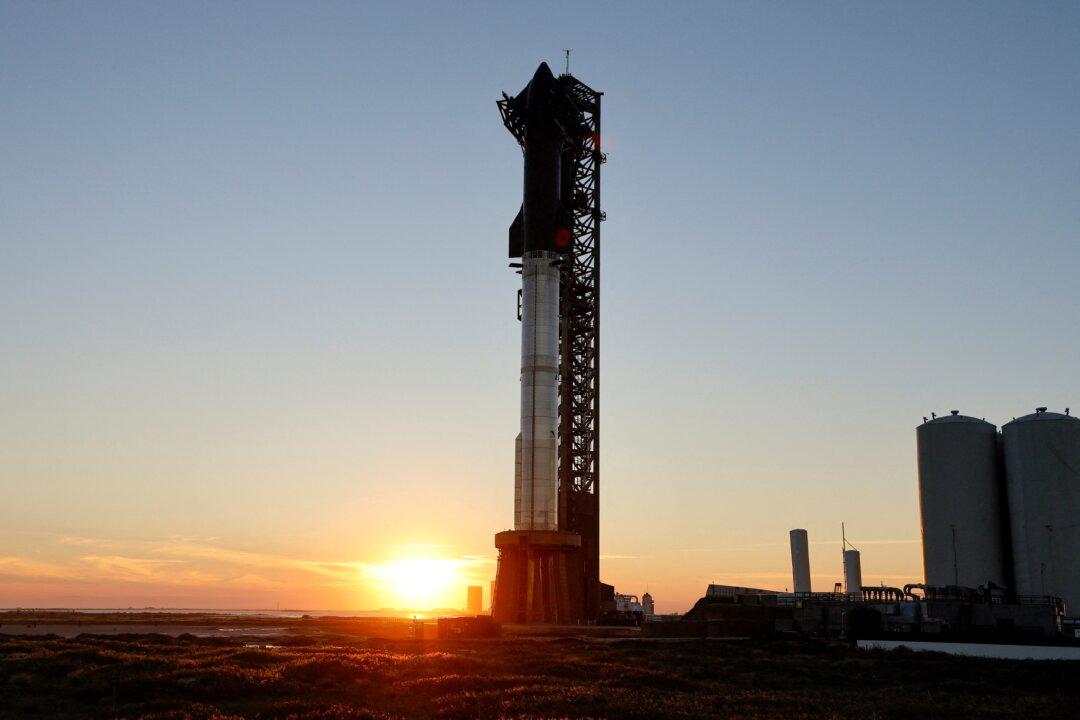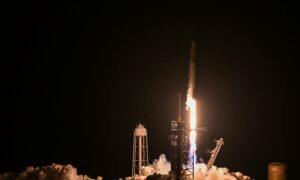The third time was indeed the charm for Elon Musk’s SpaceX, formally known as Space Exploration Technologies Corp., with no “rapid unplanned disassembly” occurring—as did in earlier tests—as the massive Starship Heavy lifted off from Boca Chica, Texas, on the morning of March 14.
Mr. Musk congratulated the company for the successful launch of what he called the “largest flying object ever made,” highlighting the significant achievement of reaching orbital velocity and marking a significant step toward making life multi-planetary.
“There’s been flames ... along the way, but the third time’s the charm, and we made it to space,” Siva Bharadvaj, space operations engineer, said in a livestream of the launch on social media platform X, another Musk company.
From the Ground to the Stars
According to information from the SpaceX website, the third flight test of Starship was aimed at surpassing previous milestones by executing an ambitious set of objectives.These included the successful ascent burn of both stages, demonstrating propellant transfer during the upper stage’s coast phase, and attempting the first-ever relight of a Raptor engine in space.
A Momentous Launch
As reported by The Associated Press, the spacecraft, mounted atop its Super Heavy booster, embarked on its journey at about 8:25 a.m.This test flight aimed to improve upon previous attempts that had ended in dramatic explosions, with SpaceX’s latest mission extending partway around the Earth before its planned descent into the Indian Ocean.
Despite the initial success, the mission faced a setback during its return. The Associated Press detailed that SpaceX lost contact with Starship as it neared the Indian Ocean, ultimately leading to the loss of the spacecraft.
However, the duration and achievements of this flight represented a considerable improvement over previous tests, with SpaceX and NASA both viewing the outcome as a crucial step forward.
SpaceX’s longtime chief operating officer, Gwynne Shotwell, shared a recap alongside congratulations to the team in a post on X.
“Happy birthday to @SpaceX! What a day,” Ms. Shotwell wrote on X. “HUGE congratulations to the entire team for this incredible day: clean count (glad the shrimpers could get out in the nick of time!), liftoff, hot staging, Super Heavy boost back and coast (and likely a couple engines making mainstage during landing burn!), clean ship ‘insertion’ and coast, payload door cycling and prop transfer demo (to be confirmed!), and ship entry!”
By reaching higher and farther than before, Starship demonstrated its potential as a pivotal part of NASA’s Artemis moon-landing program, aiming to land astronauts on the moon in the coming years.
NASA Administrator Bill Nelson lauded the event in a post on X.
“Congrats to @SpaceX on a successful test flight,” Mr. Nelson said in the post. “Starship has soared into the heavens. Together, we are making great strides through Artemis to return humanity to the Moon—then look onward to Mars.”
The Road Ahead
Despite the setback of losing the spacecraft during its return, the successful launch and partial completion of the flight’s objectives represent a significant leap forward in space exploration.The Federal Aviation Administration noted in a social media post that they will oversee a routine “mishap” investigation into what caused the vehicle to veer off its planned splash down in the Indian Ocean.
SpaceX’s innovative approach to development, focusing on rapid iteration and learning from each test, continues to push the boundaries of what is possible.
As SpaceX moves forward with its plans for Starship, including carrying cargo and crew to orbit, the moon, and beyond, the lessons learned from this and each subsequent test will be invaluable.
The success of this flight, coupled with the continuous support of and collaboration with NASA, underscores the potential for significant advancements in space travel.
With NASA’s Artemis program relying on Starship for future moon landings, the journey toward a sustainable human presence on the moon and beyond continues to unfold, bringing humanity closer to a new era of space exploration.







